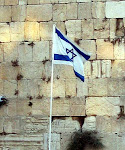By Yaakov Katz
A hovercraft designed to evacuate wounded soldiers from an urban battlefield, an unmanned helicopter and a kamikaze drone will be unveiled to the public on Monday at Israel's official pavilion at the 48th Paris Air Show.
Twelve Israeli companies - including Israel Aerospace Industries (IAI), Rafael, Urban Aeronautics and Elbit Systems - will present their wares at the Israeli national pavilion, which cost over NIS 6 million to erect at the Le Bourget expo center.
Defense Minister Ehud Barak flew to Paris on Sunday to attend the opening.
One new platform that will be on display is the MULE medical evacuation unmanned aerial vehicle (UAV) under development by Urban Aeronautics, based in Yavne.
The IDF has expressed interest in the MULE, which the company has said is capable of delivering supplies and ferrying casualties within a battle zone. The MULE can carry approximately 317 kilograms over an 80-kilometer radius. The speed of the MULE is expected to be in the range of 100 knots, with a maximum operating altitude of 3,660 meters.
Another UAV slated to be unveiled on Monday is the Picador, an unmanned helicopter developed by Aeronautics Defense Systems. The Picador has already made its first flight test and is designed for naval and land-based operations. It has a range of 200 km. and is reportedly capable of carrying a 180-kg. payload.
 HAROP being launched and hitting the target
HAROP being launched and hitting the targetAnother drone on display is the HAROP loitering munition, a self-destructing drone that can be used to detect and destroy missile launchers, anti-aircraft systems and naval craft. Developed by IAI, the HAROP can be launched from various platforms.
Rather than carrying a separate missile or warhead, the HAROP drone itself is the weapon and is designed to be a hunter and killer by loitering above a battlefield and attacking targets. It was specifically designed to suppress enemy air defense systems.
IAI recently signed a $100 million contract to supply the HAROP to a foreign customer, reportedly India.
"This is a state-of-the-art loitering munition system which features accurate detection capabilities and minimizes collateral damage to the surrounding area," IAI CEO Itzhak Nissan said.
In related news, Deputy Chief of General Staff Maj.-Gen. Dan Harel has decided to purchase the Iron Fist active-protection system developed by Israel Military Industries for the army's new "Namer" armored personnel carriers (APC). Currently in its final development stages, the Iron Fist is capable of intercepting and destroying a wide range of anti-tank missiles, from old RPGs and standard tank shells to the Russian-made advanced missiles in Hizbullah's and Syria's arsenals.
The Iron Fist consists of a radar and passive optical system that detects incoming threats and destroys them within a fraction of a second using a combustible blast interceptor. Unlike similar active-protection systems, which fire off a large number of projectiles, the Iron Fist intercepts incoming threats by using a rocket the shape of a mortar shell. The rocket destroys the threat with a blast that crushes its soft components or deflects the missile or kinetic projectile in flight.















No comments:
Post a Comment